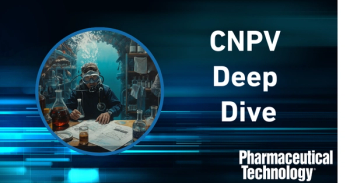
- Pharmaceutical Technology-04-02-2008
- Volume 32
- Issue 4
Science, Empiricism, and Off-label Use
Was FDA's decision to issue a draft guidance on of-label information, amidst Congressional scrutiny, the right thing to do?
Once again, off-label use of medical products has become a hot topic on the front page of many newspapers. The rumored $1 billion Zyprexa settlement by Eli Lilly (Indianapolis) is drawing attention because of the size of potential recovery but is only one of a number of similar cases that have been addressed in the media. As the atmosphere becomes increasingly charged with ongoing scrutiny of off-label use by the media, Congress, the US Food and Drug Administration, and federal prosecutors, it is difficult to take a step back and consider whether all of the activity is leading to better science, better medicine, or greater consumer protection.
Janice M. Hogan
Congress and FDA have made several attempts to grapple with off-label use over the years but none of these attempts as yet have been successful. The most recent Congressional attempt, Section 401 of the 1997 Food and Drug Administration Modernization Act (FDAMA), amended previous law to allow pharmaceutical manufacturers to distribute limited information about off-label use to physicians and healthcare providers (1). FDA issued a regulation, known as Part 99, to implement the law. Under Part 99, a manufacturer could seek FDA "pre-review" of off-label information before distribution to ensure that the agency did not find the material objectionable (2).
As enacted, the off-label use provision of FDAMA imposed so many restrictions on the type of information that could be distributed that it was cumbersome at best, and therefore of limited practical use in guiding or controlling off-label information. Other restrictions in Part 99 were considered reasonable and noncontroversial (e.g., distributed information had to be truthful and could not bemisleading or pose a public health risk). The requirement that the material be labeled prominently to show it was related to off-label use was also unobjectionable.
A slow but significant sunset
Among the many restrictions, however, Part 99 coupled a manufacturer's ability to distribute information on off-label uses with a near-term intent to pursue FDA approval for the off-label use, with only a very narrow exception allowing the manufacturer to apply for an exemption from this requirement. This limitation essentially sidestepped the heart of the off-label use problem: What should pharmaceutical companies do with information on off-label indications for which they do not plan to seek approval, but that may be of considerable interest to physicians?
In addition to the practical limitations of Part 99, the provision was subject to a number of high-profile court cases that challenged whether the rule was consistent with the First Amendment. Several of these challenges achieved at least partial success in court, and FDA questioned continued enforcement of Part 99.
As planned in the original legislation, Section 401 "sunset" in September 2006, and Part 99 became obsolete. Although FDA officials continued to articulate similar principles to Part 99 in public speeches, the expiration of this provision took away the mechanism for FDA to pre-review off-label information. As a result, if a manufacturer wishes to seek input from FDA on whether off-label information is suitable for distribution, there is no available means for doing so.
Fast forward to early 2007 when a group of lawyers representing multiple drug companies met privately with high-level FDA officials, including the Commissioner, to discuss the problems created by the sunsetting of Part 99. At the meeting, the lawyers discussed the effect of the sunset provision and the problems it presented for regulated companies. The minutes of the meeting also cited "concerns about federal prosecutors pursuing distributors of this [off-label] information for criminal misconduct," concluding that "[t]here is confusion about the rules, possibly an FDA guidance could clarify the rules" (3).
In late 2007, FDA circulated internally a draft guidance document on Good Reprint Practices regarding the policy on distribution of journal article reprints on off-label use. The guidance document attempts to go beyond Part 99 in certain respects, allowing dissemination of some off-label information even if the manufacturer did not plan to seek FDA approval. The guidance does, however, retain limitations on the content of the information to ensure it was fair and balanced, and to limit the information to unabridged versions of published, peer-reviewed material.
US Representative Henry Waxman (D-CA) sent two letters to FDA inquiring about the motivation for the draft guidance and questioning its content. The first letter, sent from Rep. Waxman to FDA Commissioner Dr. Andrew von Eschenbach in November 2007, begins "I have obtained a copy of an October 2007 internal draft of new FDA guidance that would allow drug companies to use journal articles to promote potentially dangerous uses of drugs and medical devices without prior FDA review and approval. It is my understanding that the FDA intends to issue this guidance without significant changes in the very near future. I urge you to refrain from going forward with this ill-advised guidance." (4)
Rep. Waxman further cautioned that the draft guidance could "reduce the incentive for drug and device companies to conduct the rigorous studies needed to win full FDA review and approval."
In a December 2007 response to Rep. Waxman, Dr. von Eschenbach noted that the draft guidance was solely for internal purposes and that it had not yet reached a final stage. Rep. Waxman responded in January 2008, asking further questions about the lawyers' meeting and the guidance. He asked FDA to provide information about the history of development of the draft guidance, all communications with non-agency personnel about the guidance, and how the agency planned to enforce the guidance. The letter asked for FDA's response by Feb. 5. On Feb. 15, FDA formally issued the draft guidance, despite the ongoing Congressional inquiry.
Principles at stake
Underlying the question of how off-label use should be addressed by regulators are some fundamental principles of science and law. In science, the highest value is placed on the well-controlled scientific experiment, which is the principal basis for FDA approval. Science, however, also values empiricism. Scientific advancement requires continuous generation of new hypotheses, which often result from empirical trial and error experimentation. Balance between empiricism and rigorous testing is inherent in the scientific process. In the case of off-label usage, what information should be available to doctors about empirical testing of off-label uses, until and unless these uses reach the hypothesis testing phase, and who should be able to provide that information? Presently, there are no answers to these questions because there is no longer a Section 401, a Part 99, or a final FDA guidance document.
What is clear is that off-label use is a significant and important part of medical practice. In certain areas of medicine such as oncology, in which there are numerous types and subtypes of cancers that may affect very small populations, the likelihood that products would ever be approved for all relevant uses is remote. The economics of drug development simply make this unrealistic. As stated in a recent position paper on off-label use by the European Society for Medical Oncology (ESMO), "The off-label use of drugs in oncology has been estimated to reach 50% or even more. Often these uses of drugs, although off-label, are fully 'evidence based' and therefore fall within the state of the art" (5). ESMO further explains that in some instances, high-level clinical data are "difficult to reach even for treatments which are likely effective (this may be the case of rare diseases, which do not lend themselves to large clinical studies)."
Although FDA appears to be trying to address the issue of off-label use and promotion through guidance, the effort may not be enough. Since the release of the draft guidance in February, there have been suggestions that final implementation of the guidance may result in renewed litigation. It is also not yet clear what response the public draft guidance will garner from Congress. It is possible that the agency's efforts to address off-label use through guidance may not survive congressional or court scrutiny. The solution may well require new legislation enabling a retooled version of Part 99. Key aspects that should be considered, which are not currently included in the draft guidance, are the option of FDA to pre-review off-label materials and the types of audiences who could receive the off-label information. Regardless of whether FDA issues a final guidance, the importance of off-label use issues to public health, and the considerable polarity in opinions on the subject, suggest that a public process is needed, with involvement of regulators, regulated industry, healthcare providers, and patients.
For the past decade, the handling of off-label use has rebounded from Congress to the Executive Branch to the courts and back. It is time to take the lessons learned and adopt a reasoned approach, with limitations that will withstand court scrutiny and that will address the central issue of off-label use without compromising law or medicine.
Janice M. Hogan is a biomedical engineer and partner at Hogan & Hartson,
References
1. Pub. L. 105–115.
2. 21 CFR 99.
3. Memorandum of Meeting between FDA and Sidley & Austin, April 13, 2007,
4. Letter from Rep. Waxman to the Honorable Andrew C. von Eschenbach, Rockville, MD, Nov. 30, 2007, available at
5. P.G. Casali, "The Off-label Use of Drugs in Oncology: A Position Paper by ESMO," Annals of Oncol. 18 (12), 2007, 1923–1925. PT
Articles in this issue
over 17 years ago
Suppositories: The Incomplete Storyover 17 years ago
A Transformation in the Makingover 17 years ago
Vapors, Venison, and Videosover 17 years ago
Inside IPEC-EUROPE: Pharmaceutical Excipients—The View from the EUover 17 years ago
Measuring Excipient-Market Growthover 17 years ago
Report From: China, May 2008over 17 years ago
Weak Link in the Pharmaceutical Supply Chainover 17 years ago
Spectrophotometric Determination of Leadover 17 years ago
Message in a Bottleover 17 years ago
Tracking the Potential of ExcipientsNewsletter
Get the essential updates shaping the future of pharma manufacturing and compliance—subscribe today to Pharmaceutical Technology and never miss a breakthrough.




